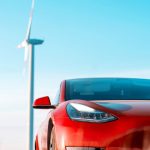Tesla could be poised for a competitive gain in the American automotive market. Recent statements from Commerce Secretary Howard Lutnick highlight a tariff exemption for cars finished in the United States with 85% domestic content. Under this policy, qualifying vehicles would not face the tariffs that have been an integral part of the Trump administration’s trade strategy. This detail could significantly impact foreign automakers operating in the U.S., especially those that rely heavily on imported components.
Previously, automakers have contended with tariffs that increased their costs, affecting how vehicles were priced for consumers. Numerous industry players have attempted to adapt to these changes, focusing on increasing domestic production to meet these protectionist policies. Tesla, by contrast, has consistently been ahead in this regard, with its vehicles ranking highly for American-made content. These developments show that the market conditions for Tesla could align further with U.S. economic policies in the automotive sector.
What Did Lutnick Announce?
During a briefing, Lutnick clarified that the new tariff exemption would benefit vehicles meeting the 85% domestic content criteria. This policy implies that foreign carmakers, even though manufacturing in U.S. plants, may still face tariffs unless they meet this threshold. Currently, cars from overseas brands that integrate significant imported parts might still be caught under existing tariff regulations.
How Does This Impact Tesla?
Tesla, having built its reputation on locally manufactured vehicles, stands out under this new tariff guidance. According to reports from American University’s Kogod School of Business, Tesla’s models, such as the Model Y and Model 3 Performance, register with 85% or higher domestic content. This ensures that these models will bypass tariffs, which could strengthen Tesla’s foothold in expanding its market presence within the U.S.
Will Other Automakers Keep Up?
The updated regulation poses challenges for foreign automakers that might need to increase their vehicles’ U.S. content to avoid tariffs. As Tesla continues its operations without this financial burden, other companies may need innovative strategies to remain competitive, particularly in cost-conscious sectors. This regulatory landscape may drive more firms to bolster their local supply chains or reevaluate production strategies.
Tesla’s position remains dominant with its commitment to domestic manufacturing, and this tariff exemption further cements its advantage in the U.S. market. Achieving the necessary domestic content percentage may require considerable changes in operational practices for competitors, impacting cost structures and consumer pricing strategies. Yet, for Tesla, this policy benefits its existing production framework and aligns with its market objectives. Consumers may experience a more competitive pricing environment if these trends continue, further reshaping the landscape of the American automotive industry.










